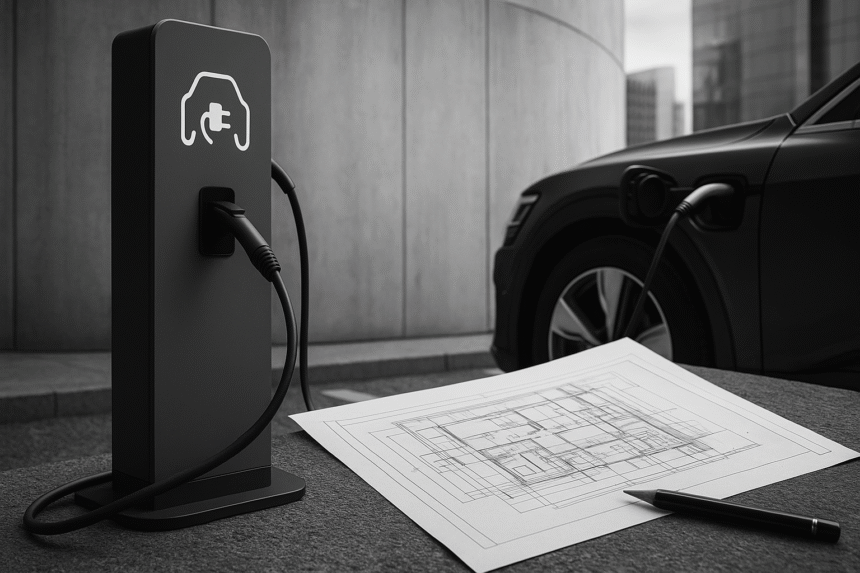10 Things I Learned From Resolving EV Infrastructure Disputes
Introduction: When EV Projects Hit Legal Roadblocks
Electric vehicle infrastructure projects are booming, but with growth comes friction. From land access delays to contract ambiguity, EV rollouts often stall not because of the technology, but because of legal and operational breakdowns. Over the past few years, I’ve helped resolve EV infrastructure disputes involving charge point operators, landlords, government entities, and construction firms. Here are 10 lessons I’ve learned that can help startups, consultants, and lawyers avoid costly mistakes.
Who This Is For
This article is for:
-
EV startups and charging infrastructure providers
-
Legal professionals and consultants working in clean tech
-
Developers and landowners considering EV installations
This list is especially relevant if you’re negotiating site agreements, construction contracts, or joint venture terms for EV infrastructure disputes in 2025 and beyond.
1. Clarity in Site Access Clauses Prevents Most Delays
Ambiguous language around when and how a site can be accessed leads to serious installation delays. One project was held up three months because the agreement failed to define access hours and third-party interference.
Tip: Use precise terms for access rights, timelines, and obligations. Add consequences for non-compliance to avoid EV infrastructure disputes.
2. Many Landowners Don’t Understand EV Equipment
Disputes often stem from misunderstandings. Some landlords assumed EV chargers were just plug-and-play boxes, not realizing they required trenching, grid connections, and civil work.
Tip: Include detailed annexes with installation specs, responsibilities, and utility impacts to prevent potential EV infrastructure disputes.
3. Shared Utility Costs Must Be Defined Early
Multiple disputes arose from unclear cost-sharing models for transformer upgrades or meter installations.
Tip: Spell out who pays for what—and when. Don’t assume future negotiations will be smooth, especially when handling EV infrastructure disputes.
4. Late Permits Can Trigger Compensation Claims
When contractors miss timelines due to delayed permits, they often file claims. In one case, a subcontractor demanded compensation despite the delay being caused by a government entity.
Tip: Include force majeure language around permits and assign responsibility for securing them to avoid EV infrastructure disputes.
5. Termination Rights Need Balance
Some EV providers want early-exit rights if utilization is low. But landowners push back. I’ve seen terminated leases with ugly legal aftermaths.
Tip: Use performance-linked review periods with structured renegotiation—not abrupt termination clauses that might lead to EV infrastructure disputes.
6. Dispute Resolution Clauses Are Often Ignored Until Too Late
Too many EV infrastructure disputes arise because contracts lack proper arbitration clauses—or bury them deep in boilerplate.
Tip: Move dispute resolution terms higher up. Consider specialized forums like DIAC or LCIA for regional enforceability.
7. Payment Terms Can’t Be One-Size-Fits-All
Subcontractors often request milestone-based payments, but operators want completion-based structures.
Tip: Use hybrid payment models with upfront mobilization, milestone payouts, and retention clauses to avoid payment-related EV infrastructure disputes.
8. Municipal Coordination Must Be Contractual, Not Just Assumed
I’ve seen public-private EV infrastructure disputes arise because municipalities didn’t grant access or approvals, despite being assumed to do so.
Tip: Include a stakeholder responsibilities matrix. Name agencies and timelines in the agreement.
9. Future-Proofing for Tech Upgrades Avoids Renegotiation
Some disputes happened when providers wanted to upgrade chargers (e.g., to 350kW) and landlords claimed it breached original specs.
Tip: Add language about future tech upgrades, provided safety and footprint remain unchanged, to avoid EV infrastructure disputes over tech advancements.
10. Non-Compete Clauses Can Backfire
Landowners often want exclusivity, but overreaching non-competes can be challenged or ignored, leading to potential EV infrastructure disputes.
Tip: Limit exclusivity to reasonable geographic or category scopes. Include clear carve-outs.
Mini Case Example
In one UAE-based project, an EV infrastructure dispute arose when an EV operator was denied site access after construction had begun. The agreement allowed for termination if access was withheld for more than 30 days but didn’t define who was responsible for delays. A quick renegotiation—framed by a clearer access protocol and liquidated damages clause—helped both sides resume work within two weeks.
Checklist Summary: 10 Lessons for EV Legal Contracts
- Define site access hours and logistics
- Include infrastructure visuals and installation notes
- Clarify all utility cost shares
- Specify permitting duties and legal consequences
- Balance exit rights and renegotiation triggers
- Move dispute clauses higher and customize them
- Structure flexible payment models
- Detail agency coordination roles
- Allow for safe tech upgrades
- Limit exclusivity and non-competes
Closing Thoughts + CTA
Resolving EV infrastructure disputes taught me that contracts don’t need to be complex—they need to be clear. Most legal clashes stem from missing details, mismatched expectations, or poor communication. If you’re setting up EV infrastructure disputes in 2025, review your templates now, before problems start.
Need help drafting or reviewing your EV infrastructure dispute contract? Book a legal consult or explore our tailored contract templates for EV projects.



Leave a Reply